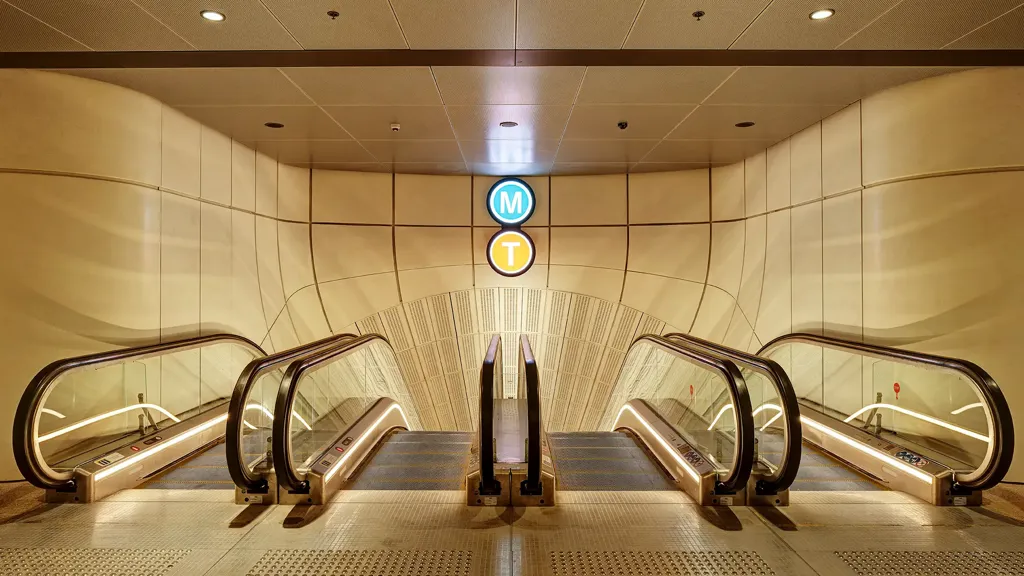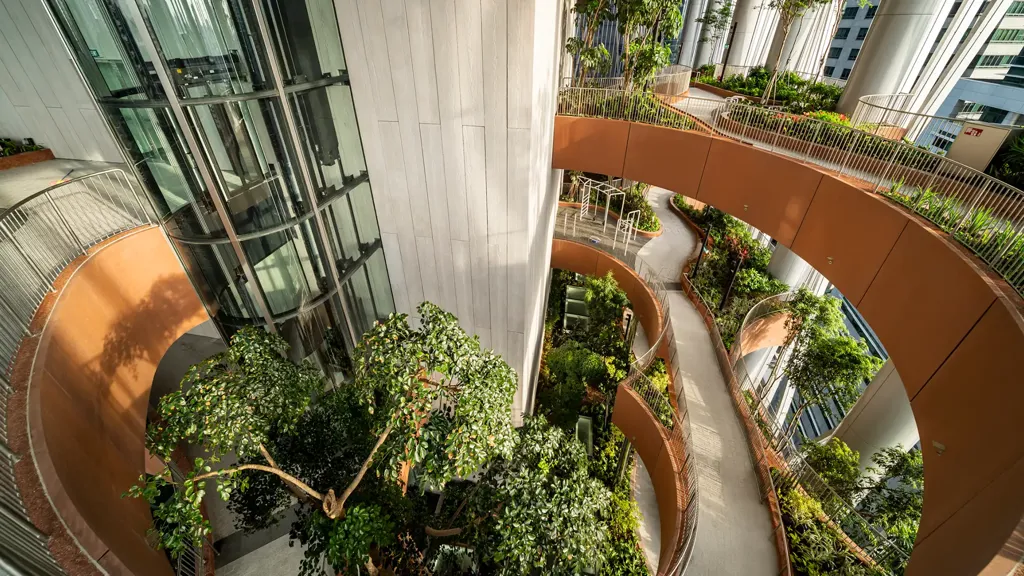Our Auckland sustainable office fit out restores nature and optimises wellbeing
Living Arup, 15 Galway Street, Hayman Kronfeld Building, Aotearoa New Zealand

What we delivered
-
A sustainable workspace co-created with Unispace and cultural advisors at Te Manu Taupua.
-
During construction, we diverted 99 per cent of waste away from landfill by prioritising material reuse.
-
We pursued the Living Building Challenge, a globally recognised certification for sustainable and regenerative buildings.
Get in touch with our team
Inside two heritage warehouses in the heart of Auckland’s vibrant Britomart precinct is a new workplace for our people. Regenerative fit-out design and material choices have transformed the office space into a living, sustainable workplace.
In collaboration with Unispace and cultural advisors at Te Manu Taupua, we co-created a sustainable workplace celebrating our values and connection to Māori culture and values.
Guided by a collaborative planning and design approach, the office fit out restores the natural environment and promotes occupant wellbeing through sustainable material choices, waste reuse, energy efficiency and biophilic design. Biophilic design connects people with nature, culture and place through incorporation of natural features and patterns.
Our new Auckland office is a contemporary workspace and collaborative hub for our people and collaborators. The office is situated next door to the historic Britomart Train Station, with the new city rail link, and within easy walking distance of the downtown ferry terminal, desirable boutiques, award-winning restaurants, bars, galleries and public open spaces.
Designing a living building for our Auckland office
Aligned with our firm-wide net zero by 2030 goal, we took a regenerative and sustainable design approach for the office fit out. We pursued the Living Building Challenge, a globally recognised certification from the International Living Futures Institute for sustainable and regenerative buildings. To meet the criteria for a living building, we made conscious design and construction choices to positively impact the natural environment and optimise occupant wellbeing.
We checked all the materials used to avoid harmful components outlined in the International Living Futures Institute’s ‘Red List’ of worst-in-class chemicals, and all the timber products used are Forest Stewardship Council certified.
We used recycled and salvaged materials where possible, including the recycled plastic benchtops, reclaimed bricks, salvaged sliding doors and acoustic panelling, and repurposed furniture from Arup’s Sydney office. During construction, we diverted 99 per cent of waste away from landfill by prioritising material reuse, sorting offcuts directly on site to achieve the highest levels of recycling, and donating dust from plaster and wood for use in compostable toilets.
Biophilic design connects people with nature, culture and place through incorporation of natural features and patterns. Occupants can see and touch natural raw materials from the local environment, including ponga logs, reclaimed Kauri timber, and river stones. Native plants are distributed throughout the office, so our people have visual access to greenery while working. In the entry foyer, kitchen and retreat native plants are concentrated to provide opportunity for intentional and direct interactions by everyone.
The office is resource and energy efficient, designed to use at least 35 per cent less energy and 30 per cent less water than a typical office fit out. Daylight and motion sensors ensure lights are only used when necessary and zoned air conditioning gives occupants direct control over air flow and temperature while reducing energy consumption. Efficient taps, showers and toilets reduce annual water consumption which is actively monitored.
Our office fit out is considered carbon neutral through the purchase of carbon offsets to account for the embodied carbon emissions of the materials used in the fit out.







Using Māori knowledge to inform planning and design
In Māori culture, kaitiaki are chosen by their tribe to advocate for elements of nature. For kaitiaki, the goal is to work collaboratively with project teams and governments on innovative ways to adapt to climate change, using Māori knowledge and values to inform planning and design.
Working collaboratively with a local kaitiaki was an important part of planning and designing the new office. Reflecting the values of kaitiakitanga we minimised impacts to nature, re-used and upcycled as much as possible. The office signage educates occupants and visitors about the building’s design using Māori naming conventions and storytelling, recognising the significance of local cultural landmarks.
Dane Tumahai of Ngāti Whātua Ōrākei helped to build our cultural capability by engaging our senior leaders and interweaving Māori values and cultures into the design. Occupants and visitors gain a better understanding of Māori culture and traditions imbued with a sense of belonging.
Dane Tumahai
Director, Te Manu Taupua




Unispace / Te Manu Taupua
Projects
Explore more commercial property projects

Designing Sydney’s first integrated station development
Sydney Metro Martin Place integrated station development, Australia

CapitaSpring uses biophilic design to keep people cool and healthy
CapitaSpring, Singapore

Challenging convention to create the next generation of tall buildings
50 Fenchurch Street, United Kingdom

Connecting work, nature and Country
Arup Workplace, WS2, Australia
Get in touch with us
If you'd like to speak to one of our property experts about any of the issues raised on this page or a potential collaboration then please get in touch by completing the form.

